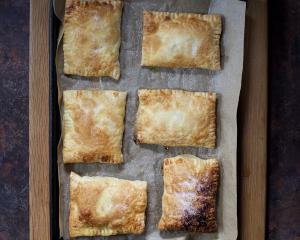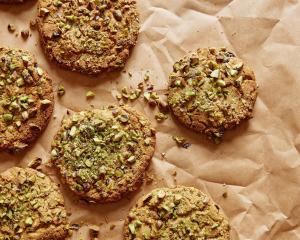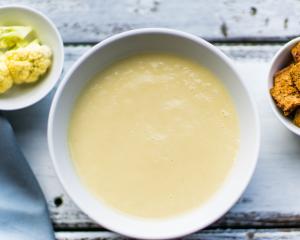Daniel Pfyl, hospitality management lecturer at Otago Polytechnic, shares some professional techniques to make your cooking easier.
This month, Chef Pfyl shows us how to make an Italian Christmas specialty, panettone, a sweet fruit bread baked in a tall cylindrical tin.
It has the traditional European Christmas flavourings: currants, sultanas, mixed peel and lemon.
Panettone
Serves 12
Ingredients
4 tsp dried active yeast
1 cup lukewarm water
4 Tbsp caster sugar
2 eggs
½ cup low-fat plain yoghurt
1 tsp vanilla extract
1 Tbsp grated lemon zest
¼ tsp salt
500g strong or hard bakers flour
80g currants
60g sultanas
60g mixed candied peel
1 Tbsp icing sugar
Method
1) Mix 1 teaspoon of the sugar with the lukewarm water in a bowl and sprinkle the yeast on top.
2) Put the bowl in a warm place for 10 minutes or so until it begins to froth on top.
3) Prepare the cake tin: you can use an ordinary cake tin, but traditionally panettone is tall with a dome-shaped top. Chef Pfyl uses a large can with the top and bottom cut off. A can of about 840g or a large, commercial-size can is suitable, but it should not be too thin in proportion to its height. Small panettone can also be made in Texas muffin tins. If you are using a can, spray the inside and lay it on a piece of baking paper. Fold up the edges of the paper bit by bit, twisting them in so the paper holds on to the tin. Place on a baking sheet.
4) In another bowl, mix the eggs, the rest of the sugar, yoghurt, vanilla and salt. Grate the zest of a lemon in. Whisk together. Sift in the flour and the bubbling yeast and water and combine.
5) It's a good idea to mix with a knife until the dough comes together, then turn it out on to a lightly floured surface and knead for about 10 minutes. The dough will be sticky at first but will become less sticky as you work it.
6) Stretch the dough and push, using the weight of your body instead of just your arms.
7) When the dough is soft and smooth, shape it into a ball, pushing the edges underneath so the skin on the top stretches. Lightly flour the bowl and put the ball of dough in it. Cover with a tea towel that has been wet with hot water and wrung out. Alternatively, put it in a plastic supermarket bag and tie the handles together. Put the dough in a warm place to rise until doubled in size, for an hour to an hour and a-half.
8) Put the fruit and candied peel in a bowl, mix with icing sugar and set aside. When the dough has doubled in size, punch it down with your fist. Add the fruit and fold the dough over to enclose it.
9) Knead the dough again, pushing back any fruit that pops out. After 3-5 minutes, the fruit should be evenly distributed and the dough well kneaded. Shape again into a ball, easing the dough underneath to stretch the top. Try not to have sultanas or currants poking out of the top. Adjust the shape so it will fit into the prepared tin. Cover as before and prove again in a warm place until doubled in size, probably 30-45 minutes.
10) Depending on the size of the tin, the dough may rise above the sides.
You can decorate the top with almonds if you wish.
Preheat oven to 180degC. Bake the loaf for about 45 minutes until it is golden brown and a skewer inserted in the centre comes out clean.
Remove from tin and sift icing sugar over the top. Cut in slices to serve.
• If you would like to request a particular technique we haven't already shown, please let us know. Write to Cooking 101, Editorial Features, Otago Daily Times, PO Box 181, Dunedin or email odt.features@odt.co.nz with cooking 101 in the subject line.











